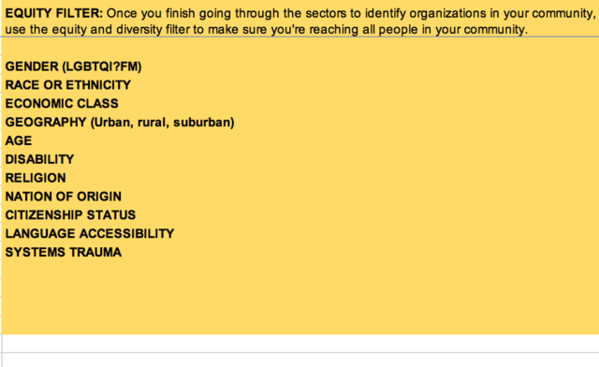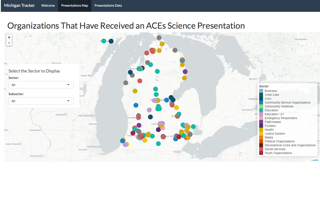We developed ACEs Connection's Diversity, Equity & Inclusion Tool — called the Inclusion Tool, for short — to ensure that ACEs initiatives across the world focus on being inclusive when forming a steering committee, recruiting leaders, providing education about ACEs science, recruiting members, or providing resources and services within their communities. The more inclusive your ACEs initiative is, the more diverse it will be, giving your initiative a real shot at achieving equity and our common goal of solving our most intractable problems.
We're debuting the Inclusion Tool today, along with our Growing Resilience Communities 2.1 framework for communities starting and growing ACEs initiatives. Here's a post about the debut, and links to Start Your ACEs Initiative! and Grow Your ACEs Initiative!
In the realm of social change, diversity, equity and inclusion — referred to commonly as DEI — are becoming buzzwords. Organizations, coalitions and coalitions that use collective impact are all striving to appear focused on DEI. But if everyone knows that equity, diversity and inclusion are so important, why are so few getting it right? Why, with all the money and effort put forth, are there still obvious social disparities? Why are most collective impact, community organizations and non-profits lacking in diversity? Why are so many working in silos? Why are the vast majority of leaders in this work in the U.S. still white?
History in all countries — especially in the United States, which is supposed to be a "melting pot" and a land of "equal opportunity” — has shown that being inclusive doesn't come naturally or easily. Oppressive systems borne of people unwilling to share power are deeply embedded in our societies. Therefore, we all must take intentional action to bring about social change. Leaders of ACEs initiatives must be mindful and purposeful about who is invited to the steering committee table, who receives ACEs education and who is invited to partner in the initiative. DEI should always be at the forefront in our work. All efforts should be filtered through an equity lens. ACEs Connection's Inclusion Tool provides that equity lens for ACEs initiatives looking to achieve their goals of integrating ACEs science in all families, organizations and systems in a community.
Diversity, equity and inclusion are more than buzzwords; they are processes. Ensuring diversity means having a group that is diverse in race, sexuality, gender, geography, socio-economic status, physical ability, and age. Ensuring equity means that everyone within your ACEs initiative and those whom you serve in the community are getting what they need. Equity is not equality. Some need more than others. And, inclusion is making sure that you do not fall into tokenism. Everyone has an equal voice and are members in the fullest sense of the word. Effort, strategy and education are required to get them right.
These processes can be difficult, but they're doable, especially if you use the Inclusion Tool. The tool helps initiatives organize their community contacts to make sure that every part of the community is included, from education to law enforcement to the faith-based community. Not only can you track which sectors are missing, you can use a demographic lens to make sure you're reaching all people within a sector. For example, here is Michigan's presentations map where colored dots represent the organizations in different sectors that have receive a presentation about ACEs science.
Our equity filter includes 11 demographics that we identified as important to include in an ACEs initiative. For example, many cities have a refugee population that often has its own youth groups, religious organizations, media and health clinics that may be unknown to the majority of the community's population. An example of a sector that is often overlooked is systems trauma. Those who have been traumatized by the very systems put in place to serve them - for example children abused by the foster care system, domestic violence survivors humiliated by the police, patients whose concerns are ignored in healthcare systems, people who rely on a system of welfare that keeps them locked in poverty - need to be included in a local ACEs initiative. ACEs Connection's Inclusion tool provides much-needed guidance on how to be inclusive and create an ACEs initiative that accurately reflects the community you serve.
 I've attached the Inclusion Tool to this post, as well as an example of how the ACEs initiative in Nashville began filling it out. (These tools are also attached to the Grow Your ACEs Initiative Section.) They're yours to use and share. Contact your regional community facilitator if you have any questions regarding the Inclusion Tool or any other part of Growing Resilient Communities 2.1.
I've attached the Inclusion Tool to this post, as well as an example of how the ACEs initiative in Nashville began filling it out. (These tools are also attached to the Grow Your ACEs Initiative Section.) They're yours to use and share. Contact your regional community facilitator if you have any questions regarding the Inclusion Tool or any other part of Growing Resilient Communities 2.1.




Comments (0)